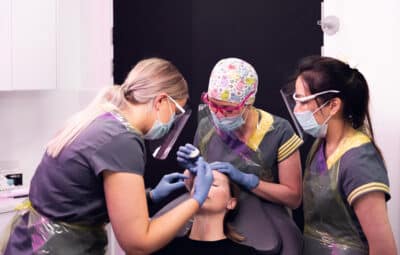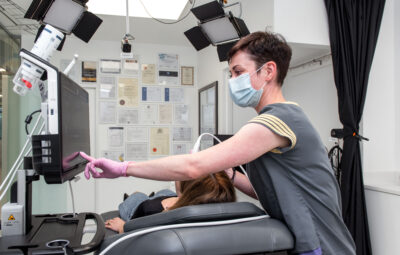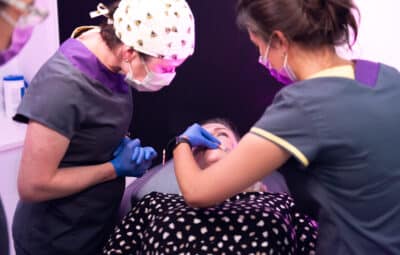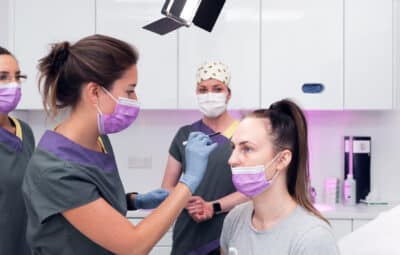
Botox Advertising: What UK Practitioners Need to Know
4 September 2025
In this post:
- Botox advertising regulations are strictly enforced by the ASA, with violations often referred to professional bodies like the GDC for disciplinary action.
- Direct and indirect references to botulinum toxin treatments are prohibited in all public advertising, including recent crackdowns on terms like ‘anti-wrinkle treatments.’
- Practitioners can legally promote consultations and provide balanced educational information, but must never imply treatment outcomes or promote the medicine itself.
- Strategic compliance actually improves marketing effectiveness by focusing on patient needs rather than treatment promotion.
Picture this: you’re a month into your new aesthetic practice when you hear from the Advertising Standards Authority (ASA) with a complaint about your recent Instagram post promoting ‘anti-wrinkle treatments’. Now you’re being investigated by your relevant medical regulatory body for bringing your profession into disrepute. You’ve wasted your marketing budget, your professional reputation is at risk, and you’re scrambling to understand the regulations you thought you were following correctly.
This scenario plays out more frequently than most practitioners realise when it comes to Botox advertising. The advertising landscape for aesthetic treatments isn’t just complicated. It’s one that is actively enforced, with consequences that extend far beyond a simple marketing mistake.
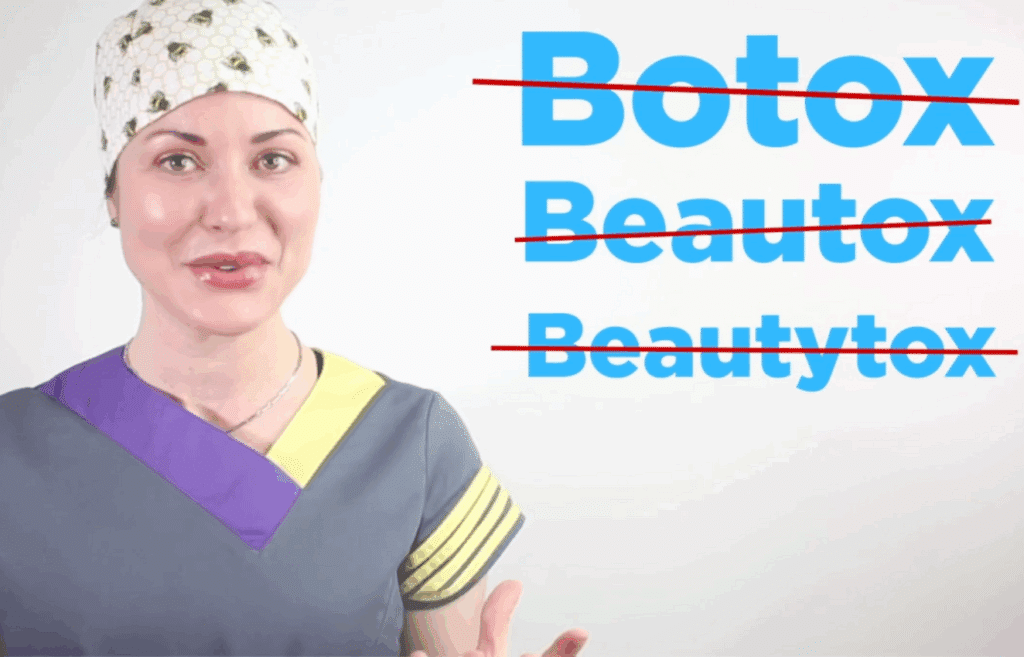
Can You Advertise Botox?
The ASA is responsible for regulating advertisements and promotions across all media in the UK. As Dr MJ Rowland-Warmann, founder of the Smileworks Aesthetic Training HUB, explains: ‘The Advertising Standards Authority regulates ads and promotions across all advertising media. This includes advertisements in press, radio, TV, online, posters, direct mail, email, leaflets, and any advertising media.’
The ASA uses the UK Code of Non-broadcast Advertising and Direct Promotional Marketing (CAP Code) as their rulebook. While compliance is technically voluntary, the consequences of non-compliance extend far beyond marketing violations. As Dr MJ warns, ‘if someone goes to the ASA complaining about you they will likely point that person in the direction of the GDC as soon as they learn you’re a dentist.’
All botulinum toxin products (Botox, Vistabel, Azzalure, Relfydess, etc.) are classified as prescription-only medicines (POMs). Under Rule 12.12 of the CAP Code, POMs cannot be advertised to the public in any form. This isn’t a legal grey area. It’s a blanket prohibition that applies to all public-facing marketing.
What You Absolutely Cannot Do
The ASA considers almost every reference to Botox and similar botulinum toxin products as promoting a POM. This creates clear violations that practitioners must avoid:
- Direct References: Any mention of Botox, botulinum toxin, or specific brand names in advertising materials is prohibited. This includes social media posts, website homepages, paid advertisements, and promotional materials.
- Indirect References: The ASA has recently started to crack down on workarounds. Terms like ‘beautox,’ ‘beautytox’, ‘wrinkle-relaxing injections,’ and ‘anti-wrinkle treatments’ are now considered indirect promotion of POMs. Even separating ‘cosmetic injections’ from dermal fillers in marketing materials has resulted in ASA complaints being upheld.
- Before and After Photographss: Showcasing botulinum toxin treatment results through before and after photos implies promotion of the medicine and violates advertising regulations.
- Endorsements and Competition Prizes: Using medical professionals or celebrities to endorse treatments, or offering Botox as competition prizes or as part of treatment packages, also violates advertising rules.
- Social Media: Hashtags, stories, and posts that reference botulinum toxin treatments are advertising, even if you haven’t paid to promote the content. The ASA has specifically targeted this kind of social media promotion in recent years.
The Grey Areas That Aren’t Actually Grey
Many injectors operate under the misconception that if they use certain terminology, they’ll avoid ASA enforcement. This thinking has proven costly as any loopholes that used to work have been closed up in recent years.
The recent elimination of ‘anti-wrinkle treatments’ as acceptable terminology demonstrates how the regulatory landscape continues to evolve. What was once considered a safe alternative is now just as bad as using the word ‘Botox’ outright. The ASA recognises that indirect references have the same promotional effect as direct ones. Patients aren’t stupid. They’re able to understand that even indirect terminology points to botulinum toxin treatments.
Dr MJ’s perspective on these changes is particularly illuminating: ‘There’s no point trying to game the system. Let’s take this recently closed ‘anti-wrinkle treatments’ loophole as an example. It’s important to see the big picture rather than just trying to childishly push the limits as far as you can before getting a smack.’
Attempting to circumvent advertising regulations not only risks your professional reputation, but it’s also a waste of time from a business perspective.
What You CAN Do (Legally & Effectively)
Understanding what’s prohibited is only half the equation. Successful aesthetic practitioners need legitimate marketing strategies that comply with regulations while also effectively reaching potential patients.
Promote Consultations: You can advertise consultations for specific concerns without referencing specific treatments. Phrases like ‘consultation for the treatment of lines and wrinkles’ remain acceptable because they focus on the consultation process rather than what products you’ll use during treatment.
Provide Educational Information: Balanced, factual information about treatment options can be provided in appropriate contexts. This information should appear on internal website pages or patient information materials. This means no home pages, offer landing pages, or promotional advertisements.
Highlight Your Professional Credibility: Focus marketing efforts on establishing professional credibility, qualifications, and expertise. This approach builds patient confidence and interest while remaining compliant with advertising regulations.
Advertise to Healthcare Professionals: Botulinum toxin treatments can be advertised directly to medical, dental, and other allied health professionals through media addressed exclusively to these audiences. This is usually in educational contexts or if you’re advertising training services.
The Benefits of Staying Compliant
Enjoy this preview of our online Essential Practice Course, where Dr MJ delves into an overview of the ASA’s rules on Botox advertising. To access the full video and course, enrol today!
Dr MJ’s analysis of the marketing landscape reveals why compliance actually improves business outcomes: ‘Even though it was okay until recently to advertise “anti-wrinkle treatments”, what good did this do? Nobody was searching for “anti-wrinkle treatments” on Google or Instagram, so there’s a pretty strong argument to say you’re wasting time and money optimising for these words.’
This observation highlights the disconnect between regulatory workarounds and effective marketing. Patients don’t search for euphemisms. They search for specific solutions to specific concerns.
The enforcement landscape has only intensified since the ASA’s January 2020 enforcement notice. Regulators are taking a tougher stance on breaches, making compliance not just legally necessary but professionally essential. As Dr MJ notes, ‘not complying with this regulation and getting prosecuted will likely end you up at, you guessed it, the GDC or GMC for bringing the profession into disrepute.’

It’s Time to Think Beyond the Rules
Effective aesthetic marketing goes beyond regulatory compliance to address fundamental patient needs. Rather than focusing on advertising specific treatments, successful practitioners should instead build relationships based on their expertise, high standards for safety, and consistently stellar aesthetic results. This is what keeps patients coming back.
Dr MJ says, ‘if they say don’t advertise Botox, then just don’t advertise Botox. You’re not going to win anything by trying to cheat.’
The future of aesthetic medicine demands practitioners who understand clinical excellence and professional compliance. Our online Essential Practice course covers everything you need to know about running a practice outside of clinical injecting. This includes advertising regulations and more. This course is designed to make sure you’re prepared for each and every aspect of this industry, something that other aesthetic courses lack.
If you’re still a beginner aesthetic injector, our Foundation Botox & Lip Filler course lays the perfect foundations for aesthetic injecting. All of our courses start with online, theoretical learning so you can come to our hands-on day equipped to start injecting.
It doesn’t stop there. Our Foundation Facial Ultrasound Course and our Advanced Facial Ultrasound Course take injecting to the next level, allowing you to visualise and understand structures in ways that static diagrams never could. When you see anatomy in real time, your understanding transforms from just theory to truly practical.
For those looking for more in-depth training, we recommend booking a one-to-one mentoring session with Dr MJ. These sessions are 100% customisable, and you’ll receive personalised instruction based on your skill level and goals.
Join us at the HUB today. Let’s shape the future of aesthetic medicine together and ensure safe, effective, and transformative results for every patient.
Want to try out our courses before committing? Take advantage of our free trial for a taste of what learning at the HUB is like.
Related blog posts:

